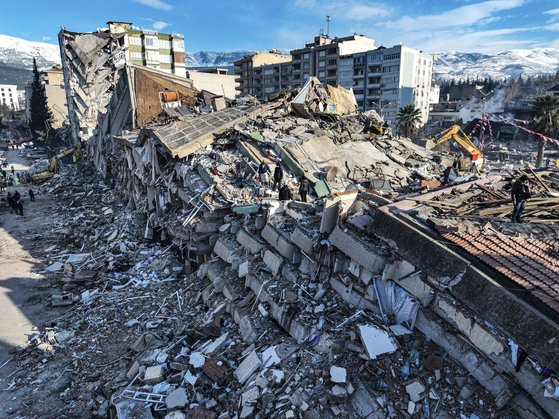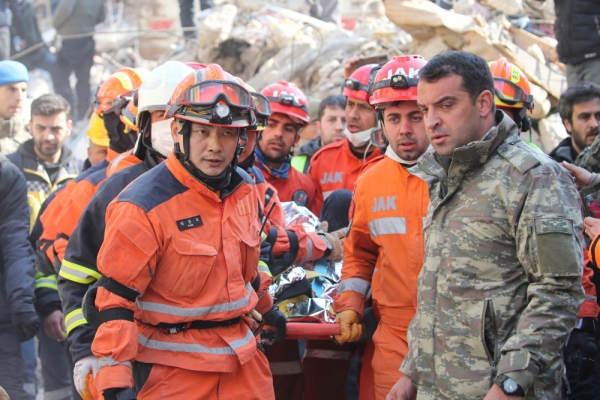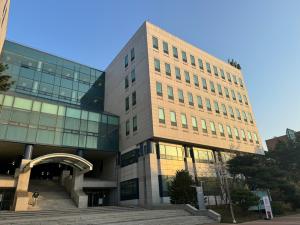Recent events in Turkey and Syria were catastrophic for the region as two powerful earthquakes measuring 7.8 and 7.5 struck the areas around 4 am on February 6. In addition, 18 aftershocks of magnitude 4, two other significant quakes, and several other minor aftershocks worsened the situation before people could be evacuated. Despite the challenges of obliterated infrastructure and a ticking clock, rescue workers from around the world joined forces to recover as many people affected by the devastation as possible. Throughout all of this, there have been many miraculous stories of survival.
The damage left behind by the two strong earthquakes is an endless nightmare as they took the lives of thousands of people. By February 14, the total number of fatalities exceeded 41,000. In Turkey, there were more than 35,000 fatalities and over 105,000 injuries. More than 5,000 people were killed in Syria and 15,000 were injured. Earthquakes ranging in magnitude between 7.0 and 7.9 cause severe damage over a considerable region and destroyed most stonewall structures and bridges. As a result, about 50,000 buildings with 210,000 residents collapsed in the earthquake or became uninhabitable. To make matters worse, buildings that were weakened from the first quake have continued to collapse. At least 7 million children are estimated at risk of exposure to hazardous situations after losing their homes and families. According to UNICEF spokesman James Elder, 4.6 million children in Turkey and 2.5 million in Syria have been adversely affected by these events. Not only has critical infrastructure such as hospitals and schools been destroyed, but the financial market is fluctuating, so the economic situation is terrible.
 |
| ▲ Countless buildings in Turkey collapsed in a strong earthquake. (Photo from NEWSIS) |
The reason for the catastrophic size of the damage is thought to be the absence of recent seismic activities. Originally, the region was fraught with frequent earthquakes, but the ground had been dormant for a while, allowing a lot of energy to build up. Turkey is one of the most earthquake-prone areas in the world. This is because it lies about the convergence of the Anatolian, Eurasian, Arabian, and African plates. The earthquake occurred when the Anatolia Plate collided with the Arabian Plate as it migrated north. The earthquake occurred on the East-Natolia Fault. More than 200 years have passed since the last magnitude 7 earthquake occurred on the East-Natilia Fault. The 6.2-magnitude earthquake that hit central Italy in 2016 and left 300 people dead released 250 times less energy than this one. Another factor to consider is the lack of seismic design due to urban sprawl and civil war. According to the 2012-2023 Turkish National Earthquake Strategy Action Plan report published by the Turkish Disaster and Crisis Management Agency, the problem of reckless development was brought on by urban expansion throughout industrialization. In response, it was mandated by the Building Act that structures built after 1999 had to adhere to seismic design standards and undergo reinforcement work. Nevertheless, the Turkish government did not exercise sufficient oversight of this plan. 1.8 million of the 10 million cases brought against unauthorized structures were suspended. Moreover, more than a decade of war in Syria has left many structures vulnerable. In addition, to avoid the ongoing violence, Syrians have gathered further north in a region bordering Turkey, where they are vulnerable to earthquakes because they live in temporary structures or outdated buildings.
 |
| ▲ The Korean rescue team doing its best to rescue the victims in Turkey. (Photo from NEWSIS) |
As the earthquakes in Turkey and Syria caused massive damage, the world watched the collective response to the recovery process. The Turkish government has been collecting an “earthquake tax" since the 1999 earthquake to fund its response to any potential disaster, but initial actions were criticized as inadequate. The WHO said it h deployed emergency medical teams from 77 nations and 13 international units, contributing $3 million from emergency funding. However, amid the local weather conditions and aftershocks, no shelters, food, clean water, and medical services that survivors needed were provided forcing victims to face a secondary catastrophe. Meanwhile, the situation in Syria appears to be dire. The United Nations Office for the Coordination of Humanitarian Affairs (OCHA) stated in a statement that Syrian communities are coping with an ongoing cholera outbreak amid harsh winter conditions that included heavy rain and snow. Over the weekend, Russia, Ukraine, Israel, and Palestine, which are often at odds with Western countries such as the United States and the European Union, as well as the International Committee of the Red Cross (ICRC) dispatched rescue teams with the sole purpose of humanitarian relief. South Korea is also actively engaged in relief efforts in Turkey. Shinhan, KB, Hana, and Woori Financial Group have begun to donate money to assist in recovery efforts, and the Ministry of Land, Infrastructure, and Transport has decided to provide satellite photographs to support the relief efforts. In addition, the 118-member Korean Disaster Relief Team (KDRT) comprised mainly of firefighters and military personnel, arrived at Gaziantep Airport in southeastern Turkey to help with search and rescue operations. The size of the Korean rescue force sent to help in this international relief operation is unprecedented.
The Dankook Herald (DKH) hopes Turkey and Syria won’t sustain any further harm. In the case of Syria, which has been in a state of anarchy because of a protracted civil conflict, the provision of relief materials is proving difficult in the northwest region, where damage was heaviest, as the area is controlled by rebels. In this situation, the DKH believes that more aggressive rescue operations will require the active involvement of international governments, backed by every nation, and supported by widespread public attention.
황인경, 이진희, 홍채연 dankookherald@gmail.com






